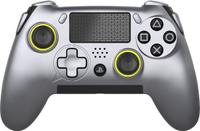Here's PS4's Answer to the Xbox Elite Controller
Scuf's Vantage is a fully modular, pro-grade controller for your PS4 — but it doesn't feel as premium as its price suggests.
The PlayStation 4 may be outselling the Xbox One by a significant margin this generation, but Sony had no answer to Microsoft's luxurious, functional and beautiful $149 Xbox Elite Wireless Controller. At least, until now.
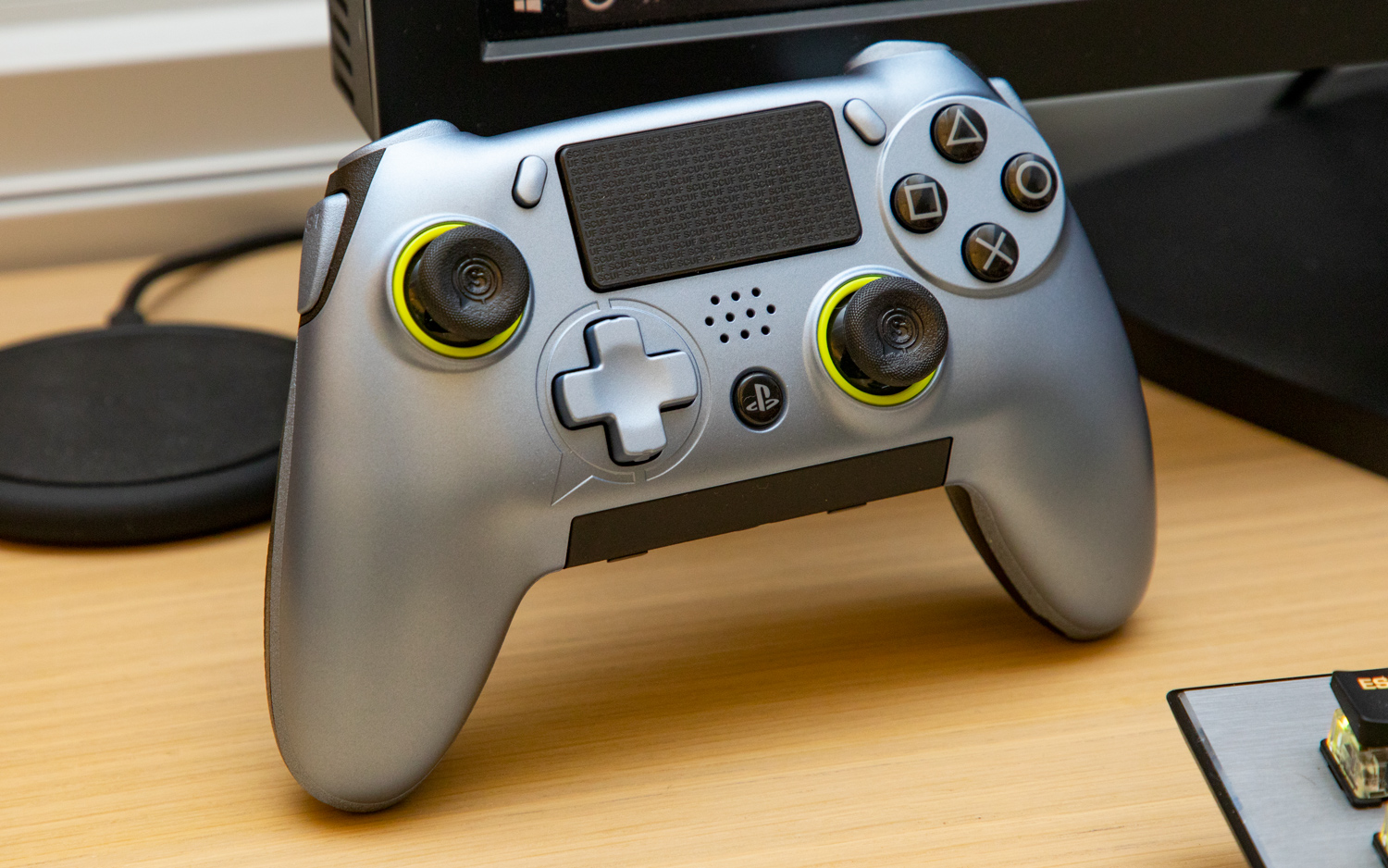
Enter the Scuf Vantage — a modular, customizable controller made by third-party outfit Scuf Gaming that aims to fill that void in the PS4's repertoire. The Vantage comes in wired and wireless versions, for $169 and $199, respectively, and supports a bunch of swappable components covering everything from the analog sticks to the faceplate and even the vibration motors.
That means that pro gamers — or even just the incredibly discerning among us — can tailor their experience to suit their personal preference. Like the Xbox Elite pad, the Vantage opts for an offset stick design, comes with four paddles on the back and even throws in "Sax" buttons beside the shoulders. All of the extra keys can be remapped to mimic standard PlayStation inputs at your will, and swapping parts is designed to be quick and simple, with the help of a mix of magnets and clips, such that pieces can be easily pried off.
MORE: PS4 Games: Our Staff Favorites
However, the Scuf Vantage isn't Sony-produced gear — something you'll be reminded of every time you pick it up in lieu of the tried-and-true DualShock 4. Compromises are unfortunately part of the deal — a reality that would perhaps be acceptable — if the pad didn't cost so much. Here's where it succeeds and where it falls short:
What We Like
Customizability: I'm not a pro gamer, as my kill/death ratio in Black Ops 4 will attest. But if I were to put words in a hypothetical pro gamer's mouth, I'd assume they'd tell you that to be at your best, comfort is important. And the Vantage gives you the flexibility to achieve that comfort.
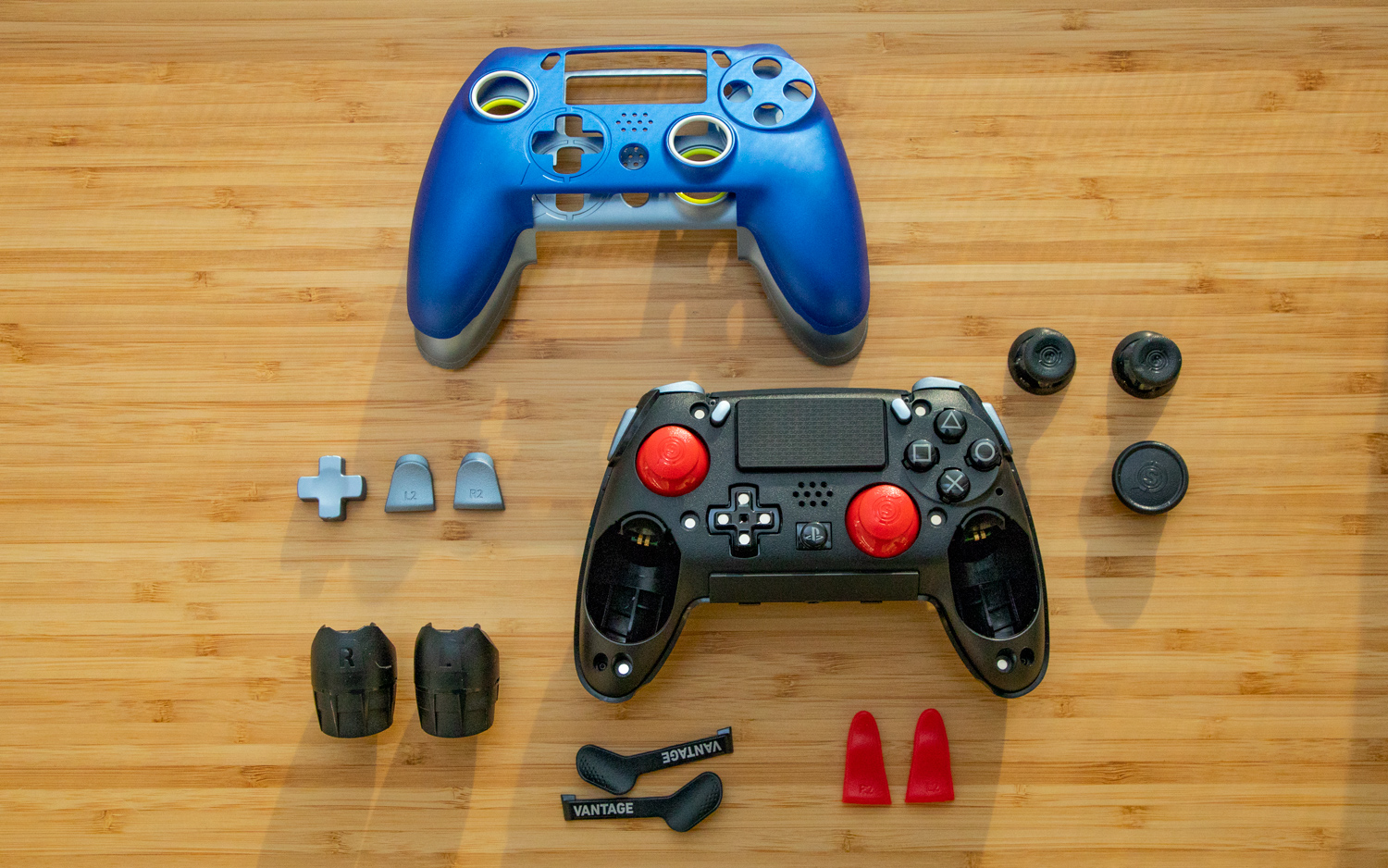
Want longer analog sticks? Pop out the standard ones and snap in longer ones. Wasting away precious milliseconds pressing down R2 and L2 all the way? Tweak the stoppers beneath them to instantly turn them into short-throw triggers. D-pad acting too stiff? Swap the plus-sign shape for a disc, and you'll have a little less resistance pulling off wicked combos in Soul Calibur VI.
The Vantage's customizability knows almost no bounds. You can even pull off the faceplate and pop out the left and right vibration motors to make it much lighter. A switch on the bottom left, adjacent to the 3.5-millimeter headphone jack, makes remapping the additional buttons easy — simply flip it over, press and hold the two buttons you'd like to tie together — and voila.
The Vantage's customizability knows almost no bounds.
Touch audio controls: The Vantage has a second touch bar in addition to the standard PS4 one, and it lives near the bottom edge between the grips. This bar offers instant one-touch controls, allowing you to slide your thumb from left to right to raise or lower the volume, while quick taps are all that's needed to mute your mic. LEDs on the bar light up to denote the status of your audio.

I much prefer Scuf's audio controls to the fiddly collection of indiscernible buttons on Razer's PS4 and Xbox pads. Being able to modulate volume without having to press a specific button makes those quick changes much less distracting in the heat of competition. Though, because it's entirely touch-activated, I did accidentally mute myself on occasion.
Good grip: It's a small detail, but an important one nonetheless. The texture of the grips on the handles of the Vantage, as well as the rubber coating on the thumbsticks, firmly keeps your palms, thumbs and fingers exactly where they need to be. The result is a sure feeling in your hands that isn't quite as present in the DualShock 4.
What We Don't Like
Not always comfortable: Although so much of the Vantage is changeable, there are limits to its comfort, even if you swap every component. That will largely depend on the game you're playing, though.
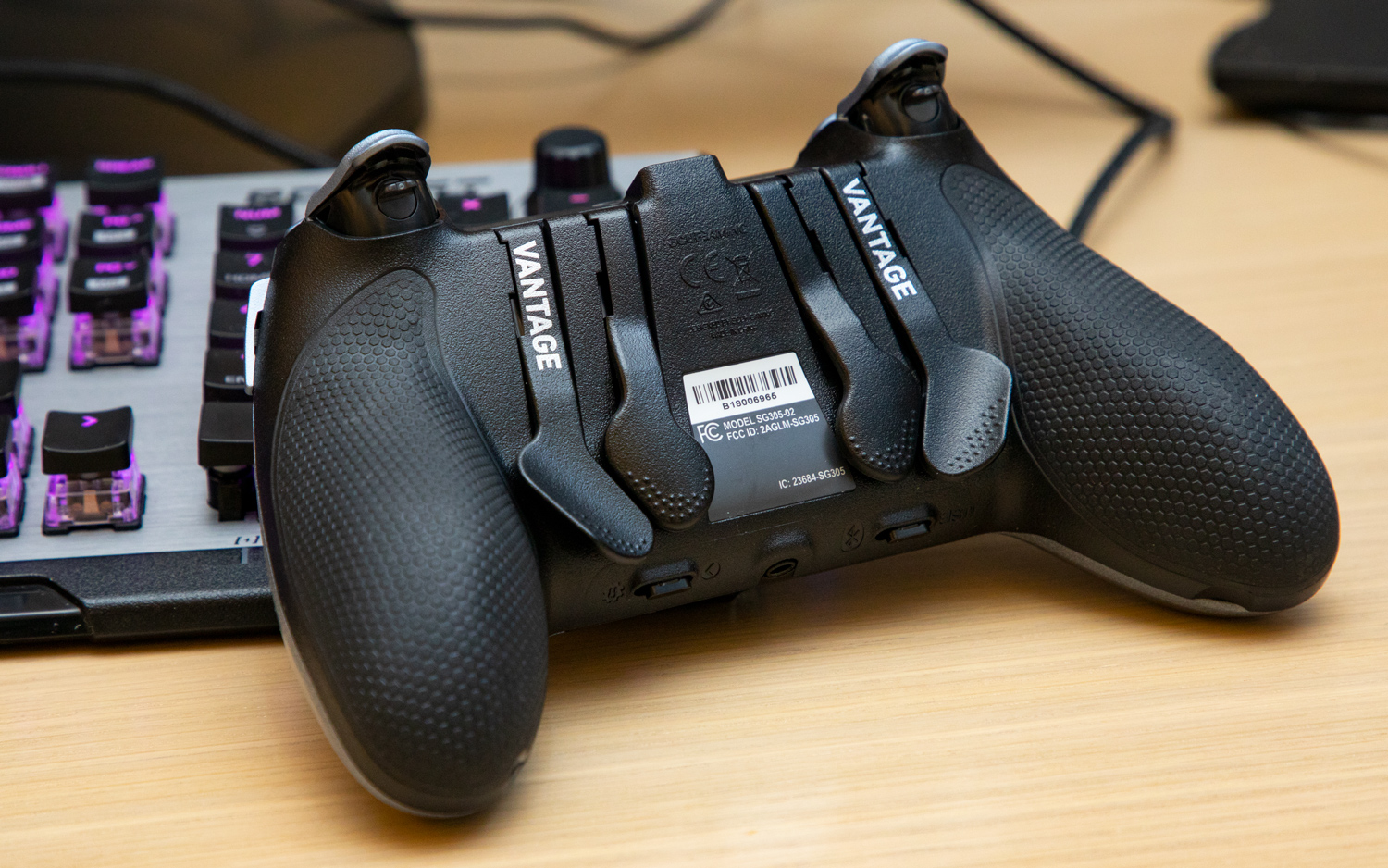
For example, I picked up the Vantage to run some races in Gran Turismo Sport and remapped the paddles on the back to function as paddle shifters when driving with a manual transmission. The remapping itself was easy to do, but the paddles felt a little stiff and out of reach. Stiffness was also a concern with the plus-shaped D-pad when I was playing Tetris Effect, and switching to the optional disc attachment didn't help much as I struggled to slide Tetrominos around quickly enough.
The face buttons are considerably smaller than those on the DualShock 4, which makes performing combos an awkward process.
But my biggest gripe by far during my time with the Vantage concerned its face buttons. They're considerably smaller than those on the DualShock 4, which makes performing combos in Yakuza 0 a more awkward process. I soldiered on, though — at least for the first hour. Then, after a couple of particularly challenging enemy encounters, it became impossible to ignore the crippling pain in between my thumb and index fingers.
I suspect Vantage owners will find more trigger-centric experiences, like shooters and racing games, to be this controller's forte. Everything else, though, is hit or miss.
Wireless hiccups: For the most part, the wireless version of the Vantage offers pretty reliable connectivity. But because it's recognized by the PS4 as a third-party Bluetooth controller and not a DualShock 4, there are drawbacks.
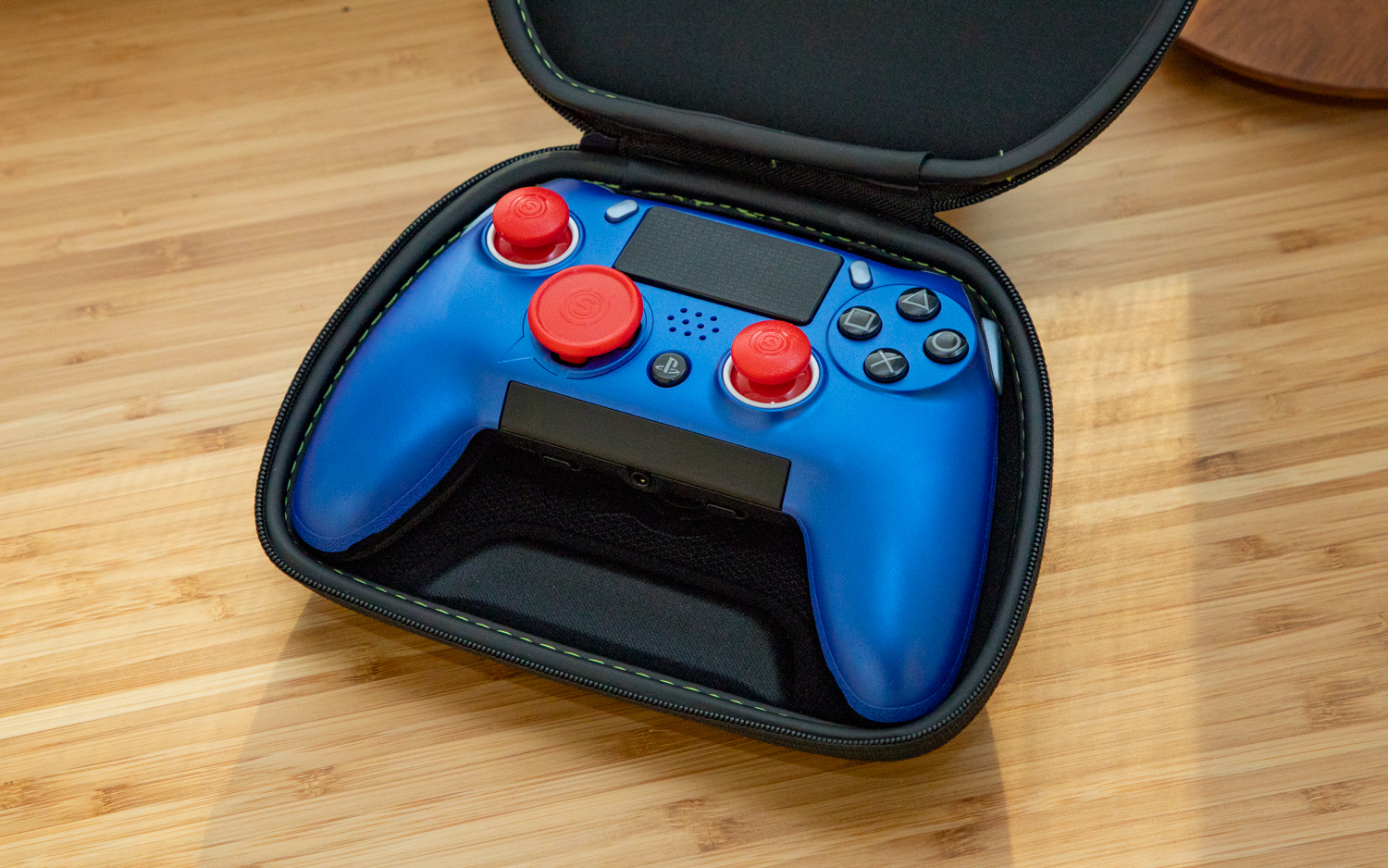
If you like to use wired headsets that connect through the DualShock 4's 3.5-mm headphone jack, they won't work unless the controller is in wired mode. The same goes for those touch-based chat controls. Also, pressing the PlayStation button to turn on the console or reconnect the controller takes a good few seconds longer than it does with the DualShock 4.
In one instance, our Vantage was totally incapable of connecting with our PS4. The only way to get the controller working again was to delete it in the PS4's list of remembered devices, and then reinitiate the pairing process. Any third-party controller is susceptible to little oddities like these, and unfortunately, the Vantage is no exception — even though it costs four times the price of a typical third-party controller.
MORE: The Best Headsets for Immersive Gaming
Expensive: At $169 for the wired model and $199 for the wireless one, the Vantage is pretty pricey, considering its compromises with regard to comfort, wireless functionality and build quality.
Microsoft's Xbox Elite pad, for example, retails for $149 (and can be had for even less, depending on where you look), while Razer's Raiju Tournament Edition offers Bluetooth connectivity for $169 and also works with your PC — something the Vantage cannot do. Both of those controllers also utilize buttons crafted from metal along with premium soft-touch plastics all around, which brings us to ...
It feels a little cheap: Given how much you're spending, you'd expect the Vantage to feel like it has been put together better than the stock PS4 controller. And yet, nothing about Scuf's flagship pad feels particularly pleasing to the touch.
The plastics are a little chintzy all around, which is a bit worrying, given how Scuf expects users to pry components on and off without breaking them. I don't think it's unreasonable to expect more premium materials for the price, especially on the face of the pad. Perhaps that would have forced Scuf to ditch swappable faceplates, but considering that the faceplates themselves exist purely for cosmetic expression and cost $20 a pop, I believe the trade-off would have been well worth it.
The plastics are a little chintzy all around, which is a bit worrying, given how Scuf expects users to pry components on and off without breaking them.
To be fair, I was impressed that all the swappable parts — including the magnetically anchored faceplate and D-pad or the buttons held with plastic clips — locked in place with a satisfying click and never shifted about, though the touch pad felt a bit spongy.
Bottom Line
Scuf should be commended for its efforts to deliver an unprecedented level of modularity with the Vantage. Unfortunately though, I can't shake the feeling that in spite of its premium ambitions, this is a third-party accessory with obvious third-party limits that keep it from offering a truly seamless experience with Sony's hardware.
Ordinarily, those concessions might be forgivable. But they're especially tough to stomach, given the Vantage's high price.
For some, the pad's modularity and offset stick arrangement may address serious concerns with the DualShock 4. And while those gamers might be pleased with the Vantage, I'd still steer clear of that more expensive wireless model. It's a convenience you really shouldn't overpay for, since you'll have to keep the Vantage plugged in to take advantage of all its features anyway.
Credit: Tom's Guide
Sign up to get the BEST of Tom's Guide direct to your inbox.
Get instant access to breaking news, the hottest reviews, great deals and helpful tips.
Adam Ismail is a staff writer at Jalopnik and previously worked on Tom's Guide covering smartphones, car tech and gaming. His love for all things mobile began with the original Motorola Droid; since then he’s owned a variety of Android and iOS-powered handsets, refusing to stay loyal to one platform. His work has also appeared on Digital Trends and GTPlanet. When he’s not fiddling with the latest devices, he’s at an indie pop show, recording a podcast or playing Sega Dreamcast.
